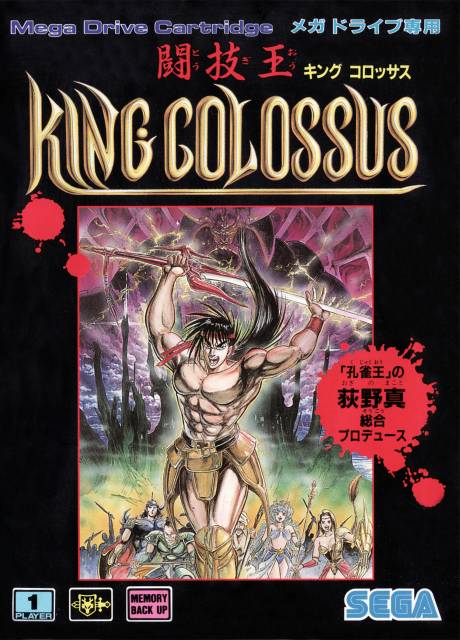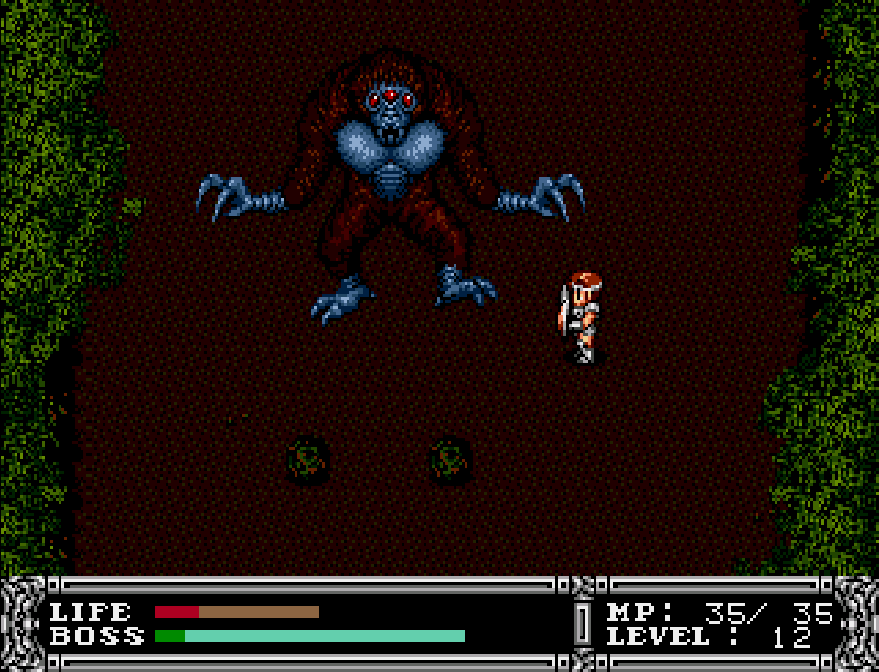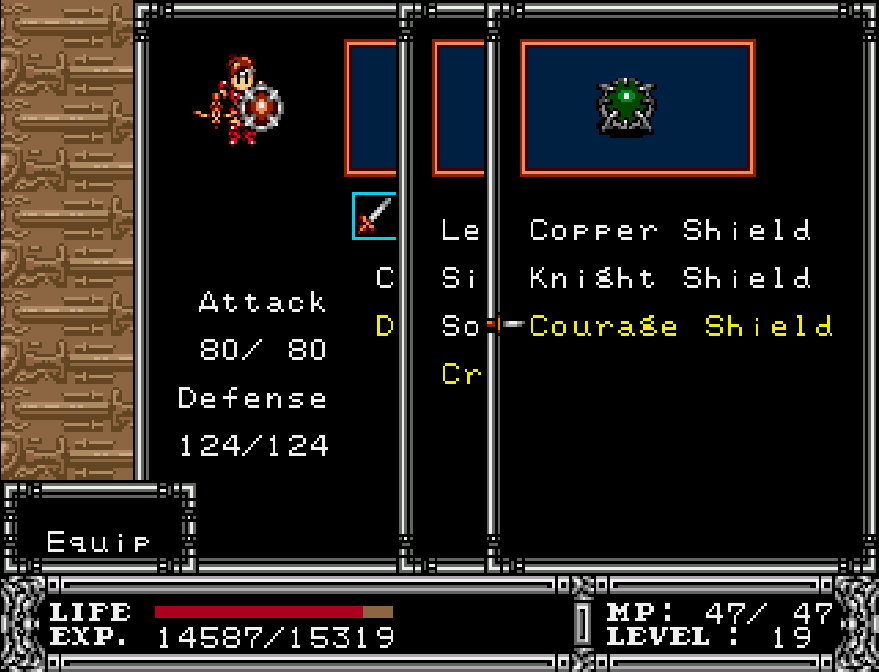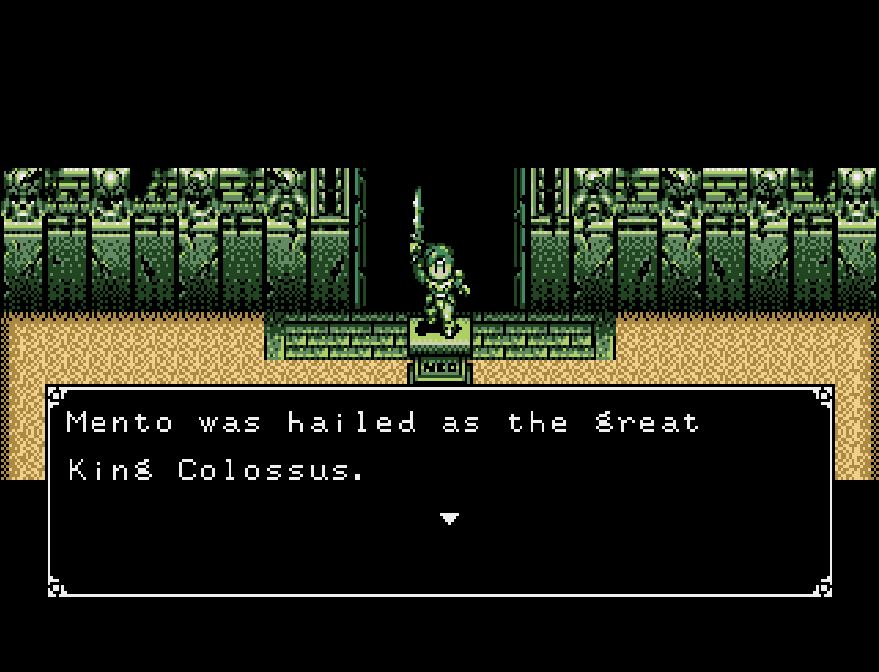Mega May Madness: Tougi-Ou: King Colossus
By Mento 0 Comments
For May 2022's "May Madness" feature I'm just playing a bunch of Sega Mega Drive / Genesis RPGs that caught my eye after researching for the Mega Archive blog series. You can see how well I'm doing by visiting the first entry, here.

So far we've covered a couple of Zelda clones and a Falcom game, but what if we were to really break away from tradition and instead cover a Falcom clone? Enter Tougi-Ou: King Colossus, developed and published by Sega themselves as an early action-RPG for Sega Mega Drive. Before we get into the game proper, I've got quite a mound of pre-amble to, uh, amble through. Tougi-Ou: King Colossus has a story written by the mangaka Makoto Ogino, who had previously worked with Sega on adaptations of his famous work, Kujaku-Ou (Peacock King). You might notice some similarities with the names. Both of the Peacock King games actually saw US localizations, though in both cases the name was changed due to the usual licensing issues: the first, for Master System, was renamed SpellCaster while the second, a very early Mega Drive release, was redubbed Mystic Defender. Tougi-Ou isn't based on anything, but rather is an original story Ogino wrote for Sega to develop into a game.
I first spied Tougi-Ou: King Colossus - the two titles have the same meaning, more or less, though "colossus" here is referring to a coliseum or arena, in which most of the mid-game is set - when working on the Mega Archive, having little idea what it was about other than it was a first-party game that somehow skipped over an international release. As I played more for research and screenshot purposes, two things jumped out at me right away: the first is that the game's story is simple enough to follow, and while there are a fair number of NPCs to talk to (and thus translate) there's no real reason why Sega should've skipped a localization given a fairly decent first-party RPG would've sold just fine; the second is that the presentation and gameplay are eerily reminiscent of the early Ys games, complete with the franchise's visual trademark of a long player health bar across the bottom third of the screen that only grows longer still as you gain levels. Sources like Wikipedia suggest the game was inspired by The Legend of Zelda (presumably A Link to the Past since it came out the previous November) and while that may or may not be true it seems more evident that they were drawing from Falcom's flagship action-RPG series. So despite an initial impression of it being yet another no-name Mega Drive obscurity, Tougi-Ou: King Colossus proved quite intriguing once I dug a little further into its backstory and I've been looking for an excuse to play it in full ever since. (I'm evidently not the only one who thought it was worth a second look, as it received a fan translation sometime in 2006. It even has RetroAchievements support.) (Footnote: Sega and Falcom did briefly have a collaboration of sorts during this time, imaginatively named Sega Falcom, but the earliest games developed by this union wouldn't appear until 1994, with last episode's Popful Mail being the first.)



The story of King Colossus is one that doesn't make itself evident early on, instead busying itself with a series of connected errands that eventually make way for the plot some one-third of the run-time in. The player-named hero has been raised in seclusion by his elder sister Flora and an ornery old man named Muuk, the latter of whom decides to test the boy by sending him to a nearby cave to recover a stolen sword. That then leads to a task to repair the now-rusted sword, which in turn is followed by a trip to a tower occupied by a cult worshipping the dark god Gryuud to rescue the blacksmith's daughter before he'll start working on the blade. Eventually, you complete enough tasks that the local King is intrigued enough by your prowess that he essentially buys your ass from Muuk and sends you to the coliseum to fight gladiators for his and his audience's amusement. It's made apparent here that the cultists aren't the only Gryuud worshippers: all the kingdoms' monarchs are in on it too, and the bloodshed generated by the arena is expediting the evil deity's imminent resurrection. After that, you escape the arena (only to be captured and dropped into another one) and start piecing together this conspiracy and your destined role in its defeat. It's fairly typical stuff that mostly serves to shepherd you from one dungeon to the next, though for a while previous ones will stay available if you ever want to revisit for anything you missed.
Gameplay-wise, it's a top-down action-RPG that has you equip a weapon from a wide selection of types, a linear progression of superior armors, shields, and accessories found all over, and a group of handy combat and buff spells that are all available from the start. Despite swords usually ruling the roost in games like these, their pathetic range will have you quickly assessing other options, including axes with wider reaches but slower swings, spears with even longer reaches, staves that cast ranged magic, and crossbows. I can swear by the last category: the superior range of crossbows makes them far more palatable against most enemy types, since it's easy to get hurt if a foe is close enough to bump into you. Every dungeon is a maze of passageways that have a certain logical progression to them - some wrap around like shortcuts, others might involve falling down a hole to reach a new area on the floor below - and most doorways are either locked or blocked, needing keys and bombs respectively to remove the obstacles. Dungeons are also full of secret areas that will use the game's angled perspective to hide their entrances, and chests are helpfully color-coded as either brown (healing items or mimics) or silver (a new piece of equipment or a key item). There's also some mild platforming involved, so caveat emptor if you're not so great at those because there'll be points where you'll need to cross a room of moving platforms and falling might mean taking a long detour to get back to where you were.



Enemy behavior ranges from the predictable to the chaotic, which is why keeping your distance is often preferable, and regular levelling can ensure that you'll never be too overwhelmed by the current dungeon's menagerie. The fact that you can save anywhere also helps tremendously. As a final boon, you have room in your inventory for a medicinal herb, which can be used at any time for a full HP refill; however, the downside is you only have space for one of them, and any excess herbs you find are used instantaneously (which might not be a bad thing depending on the state you're in when you find it). As with Ys, boss fights against enormous screen-filling foes are the main highlights here and there are a ton of the jerks; usually one or two per dungeon, with all sorts of patterns to learn and ideal strategies to use against them.
Given this is a game from 1992, it's not particularly in-depth or distinctive compared to what would follow in the genre, but by those same standards it's a very solidly-made, moderately lengthy game that managed to keep me engaged throughout. It evidently took all the best lessons from Ys because it feels like a palette-swapped version of something like the top-down Ys IV or Ys V; absent the great music, perhaps, but otherwise an accurate facsimile. The fan translation is no-frills but competent with very few (if any) typos and no points where I felt like a NPC hint got garbled or switched its meaning, which puts it ahead of most localizations made at the time. Visually, it's a little on the plain side especially with regard to the environments but functional enough; I always like the small touch of your armor and shields visually changing on your sprite once you equip new ones. There's naturally some slowdown in spots too, as many of the larger rooms might be filled with enemies or enemy projectiles; I never minded them, as the slower movement meant more time to react to incoming danger. Overall it's one of the best Mega Drive RPGs I've played yet (though, granted, I haven't played too many "true" RPGs this month...) and it still strikes me as absurd that it never saw a western localization when something like, for instance, Fatal Labyrinth did instead. It didn't even get a shout-out in Picross S: Mega Drive and Master System Edition! Sometimes there's no justice in the world.

Rating: 4 Ristars out of 5.
